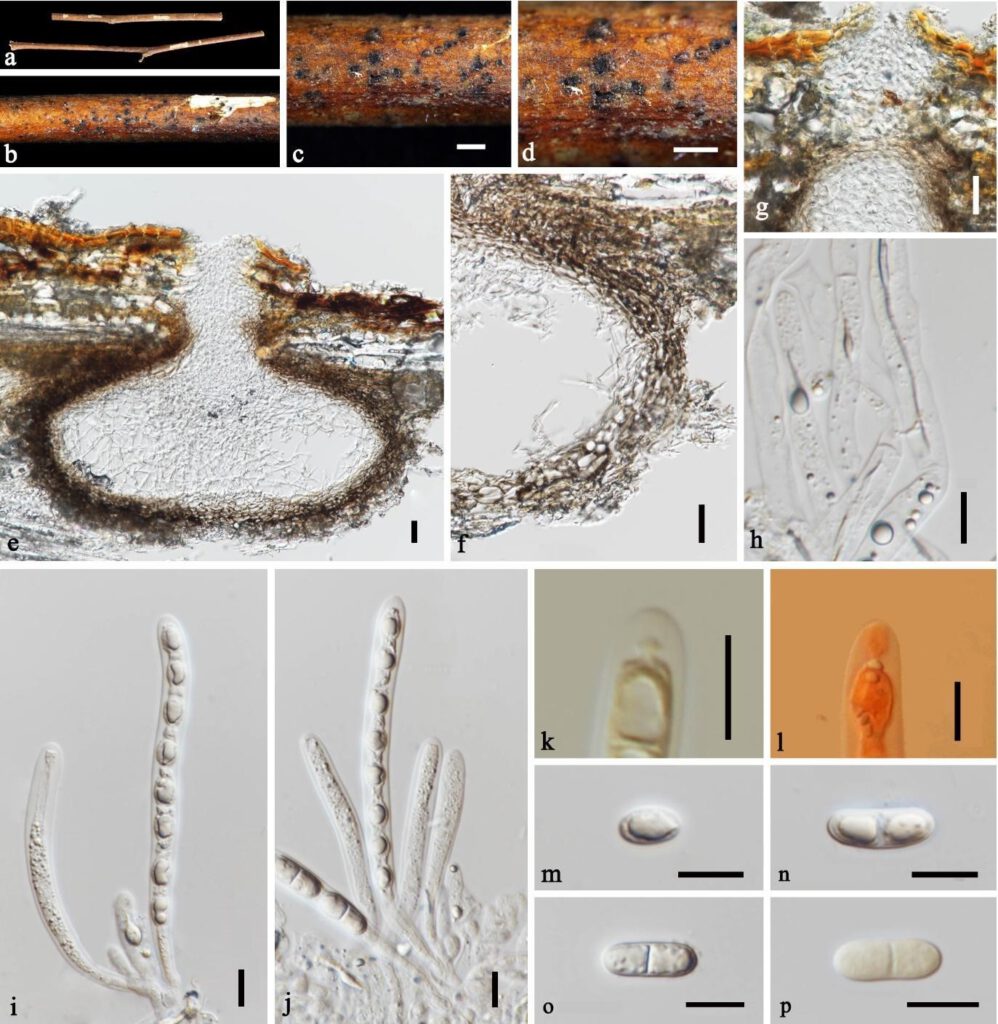Fungalpedia – Note 113 Neoamphisphaeria
Neoamphisphaeria Samarak. & K.D. Hyde
Citation when using this entry: Doilom et al., in prep – Fungalpedia, Xylariomycetidae. Mycosphere.
Index Fungorum, Facesoffungi, MycoBank, GenBank, Fig 1.
Neoamphisphaeria was introduced by Samarakoon et al. (2022) in Appendicosporaceae, Amphisphaeriales, Xylariomycetidae, Sordariomycetes with Neoamphisphaeria hyalinospora as the type species based on morphology and phylogenetic analysis of combined ITS-LSU-rpb2–tub2–tef1 sequence data. The type species was reported as saprobic on dead twigs in Thailand. Neoamphisphaeria is characterized by solitary, immersed ascomata, conical with flattened or subglobose base and septate, branched paraphyses. Ostioles are filled with white amorphous tissue and asci are cylindrical, unitunicate, with a bi-lobed or dome-shaped, J−, apical ring, with a rounded apex. Ascospores are uniseriate, hyaline, broadly ellipsoidal, aseptate when immature, 1-septate when mature, and lacking a mucilaginous sheath (Samarakoon et al. 2022). The ostiolar canal is filled with amorphous hyaline cells and asci with a bi-lobed or dome-shaped apical ring and hyaline ascospores, distinguish it from Amphisphaeria (Samarakoon et al. 2022). The genus is monotypic.
Type species: Neoamphisphaeria hyalinospora Samarak. & K.D. Hyde.
Figure 1 – Neoamphisphaeria hyalinospora (MFLU 19-2131, holotype). a Substrate. b-d Ascomata on substrates. e Section through ascoma. f Peridium. g Section through ostiole. h Paraphyses. i-j Asci. k Apical ring. Scale bars: c, d = 1000 μm, e-g = 20 μm, h-p = 10 μm.
Reference
Samarakoon MC, Hyde KD, Maharachchikumbura SSN, Stadler M et al. 2022 – Taxonomy, phylogeny, molecular dating and ancestral state reconstruction of Xylariomycetidae (Sordariomycetes). Fungal Diversity 112, 1–88.
Entry by
Yanxia Li & Mingkwan Doilom, Innovative Institute for Plant Health/ Key Laboratory of Green Prevention and Control on Fruits and Vegetables in South China, Ministry of Agriculture and Rural Affairs, Zhongkai University of Agriculture and Engineering, Guangzhou, 510225, China.
(Edited by Kevin D. Hyde)
Published online 21 September 2023
